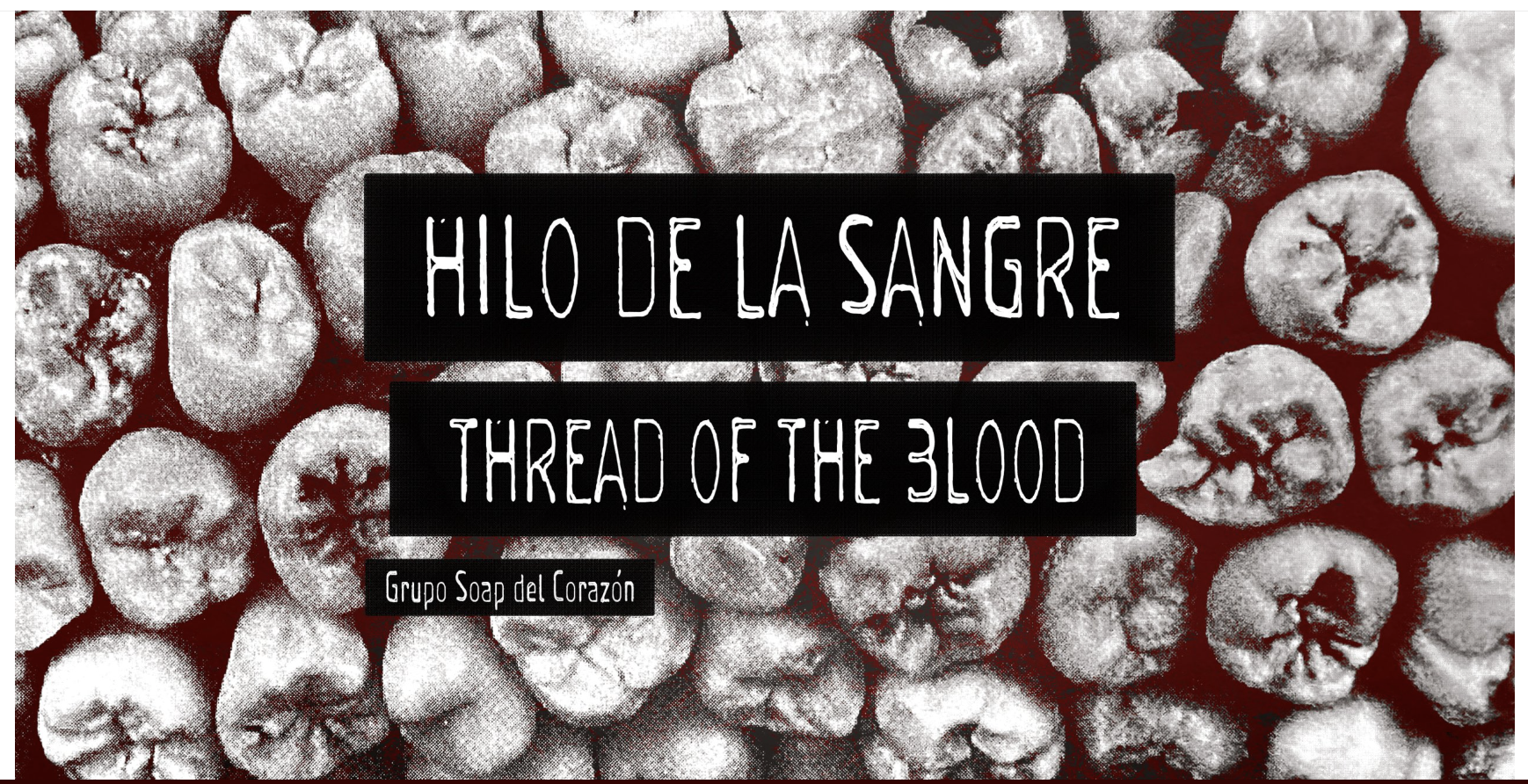HILO DE LA SANGRE (THREAD OF THE BLOOD)
July 11—December 1, 2024
Nancy and John Lindahl Gallery
This exhibition, curated by Xavier Tavera and Dougie Padilla, brings together fifteen Latine visual artists from across the diaspora to consider the significance of blood as a material foundation of life, a carrier of complex lineages, a signal of violence and death, and a cultural and spiritual symbol of sacrifice and atonement. Despite its potency, its concealed fluidity in our bodies helps us disregard its significance.
Featured artists look unflinchingly at the contradictions this vibrant red liquid reveals. Blood is evidence of the interwovenness of homeland and diaspora, of life and death, and of humanity and inhumanity. It speaks to the violence of borders that cross over communities and people in a time of strong anti-immigrant sentiment. It speaks to the devastating ongoing effects of the Spanish colonial racial caste system based on different blood “mixtures.”
As it flows through bodies, blood also carries knowledge of linkages, some strong as an iron cable and others frail as a strand of hair. For featured artists, the complexity of these venations opens intimate conversations about culture, ancestry, heritage, hierarchy, immigration, gender, and personhood.
Hilo de la Sangre is organized with Grupo Soap del Corazón, an ever-evolving artist collective founded by artists Xavier Tavera and Dougie Padilla in 2000. Over the course of its more than twenty-year history, Grupo has resisted formalization and categorization but stayed true to its roots, continually supporting Latina, Latino, and Latine artists, particularly those of the Upper Midwest, and pushing for engagement with complex and difficult topics.

Saluden a todos los que pregunten por mi.
Say hello to everyone who asks about me.
The patio in this artwork was the emotional center of the home of Maria Cristina Tavera’s beloved grandmother, Aurora. It was a place where her grandmother spent extensive time before she passed away at almost 105 in February 2024 and where family often gathered around her.
Although Tavera lived in Minneapolis and her grandmother in Mexico City, they had a deep bond. Memories are often fragmented recollections of the past and over time, even reminiscing cannot guarantee we will remember the specific details of our lived experiences. After her grandmother’s death, the patio revealed to Tavera the many complexities and contradictions of memory: the way a person can feel simultaneously strongly present and absent, the ability of objects to become containers for transmitting memories across generations, and the way some memories refuse to be recalled while others come involuntarily.
Following generations of artisans, Tavera adorns the homage with printed images and needlework embellishments to share anecdotes about the objects we hold onto in real time or in cherished memories. The customary use of excessive fonts to officiate life’s events, the thread linking two worlds, the hummingbird which embodies the soul to the afterlife and as the rat attests, some of the most vivid memories aren’t pleasant ones. By embroidering forget-me-nots across the surface of the image, Tavera signals her fear of forgetting, not only her grandmother but where she comes from.
